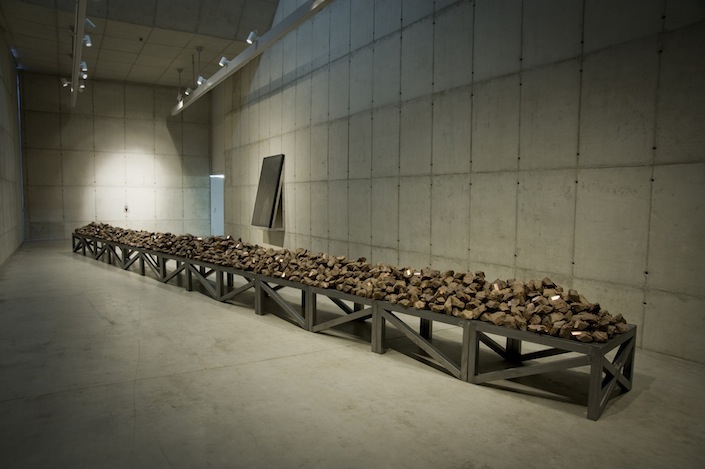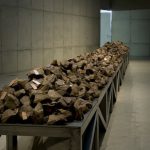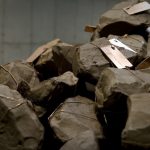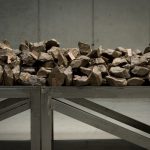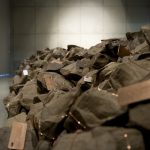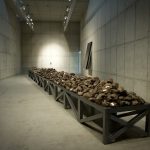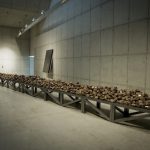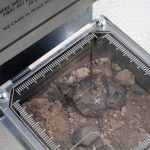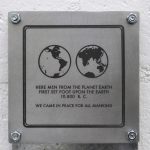1.000 KM, 10.000 YEARS
Marcelo Moscheta was the first resident artist at the Plataforma Atacama and the second one to make an exhibition with the results of this experience. Moscheta is a travelling artist that perceives his trips as a way to raise elements to rebuild cartographies through places that are not his own, by collecting small elements present in nature to create his works as installations, photographs and drawing. In his creative process he always had this great desire to portray his geographic displacement by observing and colecting, resembling an archaeologichal work that allows him, as an artist, to capture and rethink the places where he has been.
His experience in the Atacama Desert adds to a series of projects that he has developed in different landscapes throughout the world. The wilderness and dryness of the desert, it’s expanded horizon and it’s infinetly starry sky, ment to the artist a direct connection between earth and sky. The geographic conditions, as the archaeological and astronomic, that exist in this landscape, have encouraged him to create a work that engages the communication between here and infinity, from a historical perspective.
This experience has made the works become a kind of note on the universe, both in the great history that questions who we are and where we came from – extensively studied from the Atacama sky to a distance of millions of light-years in the ALMA Project – as in the origin of the human being through the paleolithic stones.
The exhibition title, 1.000 km, 10.000 years, metaphorically aludes to both the present and the past. One thousand kilometers is the distance traveled by the artist from his arrival at the Atacama desert to his last displacement in that territory, and ten thousand years ago is when the first Licantai civilizations started living in that same desert, establishing a space-time relation in his way to look at the landscape. The earth presents itself to Moscheta as the representation of the past, of the passing of ancestors, and the narration of a natural history that shelters men. It is a kind of archaeological investigation field where geographic positions and numeric figures that narrate his journey are unburied.
In the work Linha:Tempo:Espaço, Moscheta presents an accumulation of the same rock replicated several times, all grouped in a shape of a large line – obtained from the paleolithic stone and tool collection of the archeologist Ana María Barón. Each of them was catalogued with a copper plate that registers the artis’s coordinates of displacement in the ten day period that he was based on São Pedro de Atacama. Linha:Tempo:Espaço was formally born from his In Situ experience in the desert of aligning stones in the Tropic of Capricorn, really close to where the monolith that indicates the trail of the Inca path is nailed. The action performed by the artist on the tropic line does not gather any more commercial routes, but positions a contemporary act through an archaic strategy of marking a path with stones; conneting with the past by a gesture only witnessed by himself.
In a side wall of Linha one can find Atacama: 28.05.06.05/2012, a map drawn with graphite on expanded PVC that indicates the displacements he made, indicating the multiplicity of lines created from the mentioned cardinal points. With this work Moscheta shows a perspective of a non-human vision, but a view from the cosmos.
In the other side of the installation there is Timelapse, a small box with soil, sand and stones, collected in the Atacama desert, with a plaque that marks the time in which the first inhabitants were in the area. Moscheta makes this gesture to save the memory of that territory as a kind of file/record of that event. Just as once, the astronautes reminisced about their arrival to the moon with a plate that sealed the event. The artist, with that image as a reference, focuses his gaze on the floor as an object of study and re-establishes a link between the many astronomers who inhabit these lands (ALMA project) and focus their analysis on the observation of the sky, the galaxies and the entire universe.
The work Timelapse, establishes a communication between the past, through the footprint of the first inhabitants of these lands. And the future, seen through the observation of the stars, as a kind of bridge between yesterday and tomorrow, saved, sealed and recorded, this time, by the artist.
Marcelo Moscheta triangulates a look that is a perpendicular intersection of history, with his feet on the ground and his gaze turned to the sky. The horizon is in the infinity restrained by the mountains. The wilderness perceived by the artist on earth is replicated in the look by a light and equally infinite sky. It is in the sky that both perceptions converge, the history of origin, the ancestrals, the earth and the unknown in the cosmos, explaining the past and announcing the future.
As mentioned by Patricio Guzman – Chilean/Spanish documentarian – in his movie Nostalgia for the Light, the Atacama desert is a connection between past and future: ancestral past in one of the most dry deserts in the world, of which the carachteristic allows the conservation of the history of man. In the same way, the study of the sky in a place with no humidity, allows it to be the most important place in the world for the observation of stars and galaxies.
Marcelo Moscheta puts both worlds in relation by establishing a visual dialogue between them, trying to analize the experience of the way the place was once inhabited and how it is inhabited nowadays.
Alexia Tala
April, 2013
